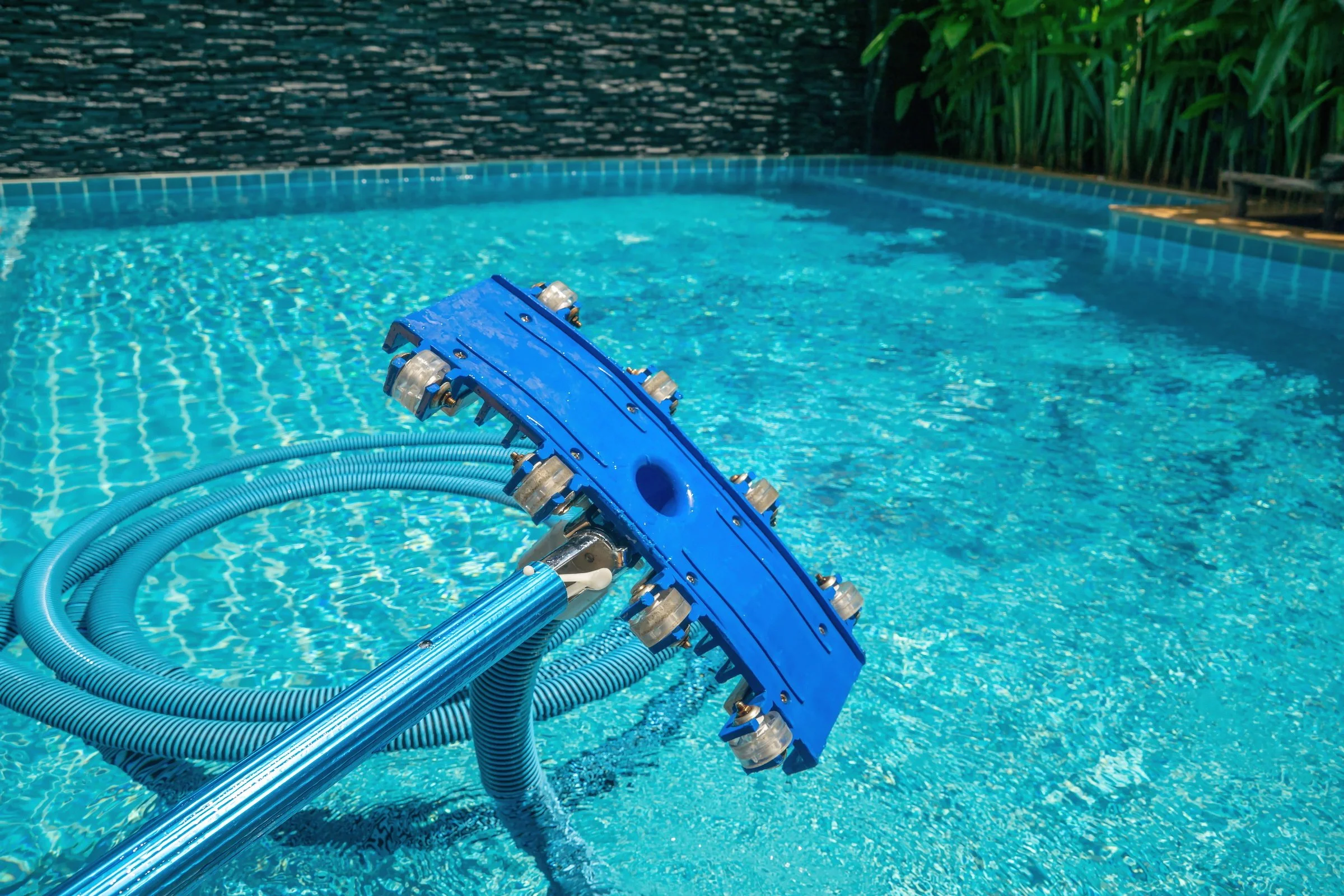That slimy substance might be pool algae, so what should you do about it?
Here’s the quick science lesson: green algae, otherwise known as Chlorophyta, is the most common type of pool algae. First signs of it show up as that slimy substance that settles on pool walls, steps, and lurking in corners. The presence of algae in a pool can be frustrating for pool owners and downright embarrassing if guests are over, but understanding the causes and taking appropriate actions can help resolve the issue.
What causes it and how to get rid of it?
Imbalanced Water Chemistry
Algae growth is often a sign of imbalanced water chemistry. Insufficient sanitizer levels (such as chlorine) or poor water balance (pH, alkalinity) create an environment conducive to algae growth. Have your pool water tested regularly by a pool professional who can adjust the chemical levels as needed and maintain proper sanitizer levels.
Inadequate Circulation and Filtration
Poor circulation and filtration can contribute to algae growth by allowing stagnant water and insufficient removal of debris. A pool professional can ensure that your pool pump and filtration system are working properly and running for an adequate duration each day, in addition to cleaning or backwashing the filter regularly.
Insufficient Pool Maintenance
Neglecting regular pool maintenance, such as skimming, brushing, and vacuuming, can lead to algae problems. Debris, such as leaves and organic matter, provides nutrients for algae growth. Clean the pool regularly, skim the surface to remove debris, brush the walls and floor, and use a pool vacuum to eliminate any accumulated dirt or algae. It’s time consuming and you have to be consistent in doing it, which is why hiring a pool professional is a smart move to keep on top of things so you can spend your time NOT dealing with slime.
Lack of Proper Circulation and Chemical Distribution
Areas with poor water circulation and low sanitizer dispersion are prone to algae growth. A qualified pool tech will pay attention to corners, steps, and other hard-to-reach spots where water circulation may be limited. They have the appropriate tools like pool brushes or specialized algae brushes to scrub these areas and improve circulation.
Environmental Factors
Environmental conditions, such as excessive heat, high humidity, heavy rainfall, or inadequate sunlight/shade balance, can contribute to algae growth. Monitor and adjust your pool maintenance schedule accordingly during periods of extreme weather conditions. A trained pool professional can maintain appropriate water chemistry, increase filtration duration, and use appropriate algaecides or pool clarifiers as needed.
Lots of People in the Pool
High bather load (the super-technical term for having lots of people in the pool at the same time) introduces organic contaminants, such as sweat, body oils, and sunscreen, into the pool. These contaminants can provide nutrients for algae growth. Rinsing off body oils and lotions before entering the pool and shocking the pool after periods of heavy usage can eliminate contaminants and maintain water clarity.
The best way to get rid of that pesky algae and prevent it from showing up again is to have a professional pool cleaner on the case. An experienced, certified, and well-trained pool cleaner will be well versed in the following to mitigate algae:
Brush and Vacuum: Brush the pool walls, steps, and any affected areas to loosen the algae. Follow up by vacuuming the pool to remove the loosened algae and debris.
Shock Treatment: Use a pool shock product that is appropriate for your pool's size and type to raise chlorine levels, eliminate algae, and test the water after the treatment.
Algaecide Treatment: Use an algaecide to help eliminate existing algae and prevent further growth. A pool tech will select an algaecide suitable for your specific type of algae.
Filter Cleaning: Clean or backwash your pool filter to remove any trapped algae and ensure optimal filtration efficiency.
Water Testing and Balancing: After addressing the algae problem, a pool tech will test the water and adjust the chemical levels to restore proper water balance and sanitizer levels.
Ongoing Maintenance: Maintain regular pool maintenance practices, including proper water chemistry, filtration, circulation, and cleaning routines, to prevent algae growth in the future.
It can often take time and hard work to get rid of algae, not to mention expense if a homeowner tries to do it on their own. As they say, ‘an ounce of prevention is worth a pound of cure’, so having routine, consistent, quality maintenance of your pool is your best defense for ensuring you always have crystal-clear water.
Reef Tropical Pools has been a trusted partner in the Southeast Florida market for over 25 years. We treat every pool like it’s our own. To learn more about how we can help solve all of your pool needs give us a call at (305) 367-2005 or visit us as www.reeftropical.com



